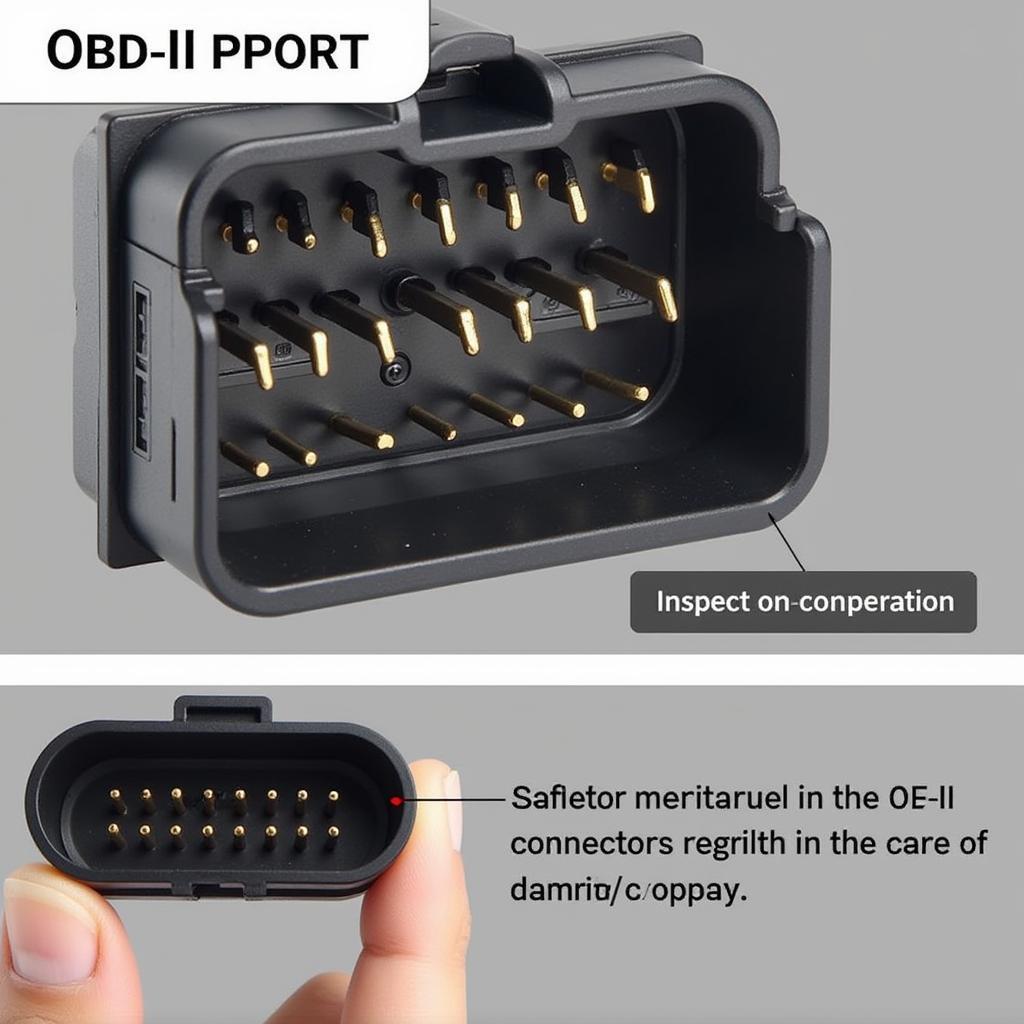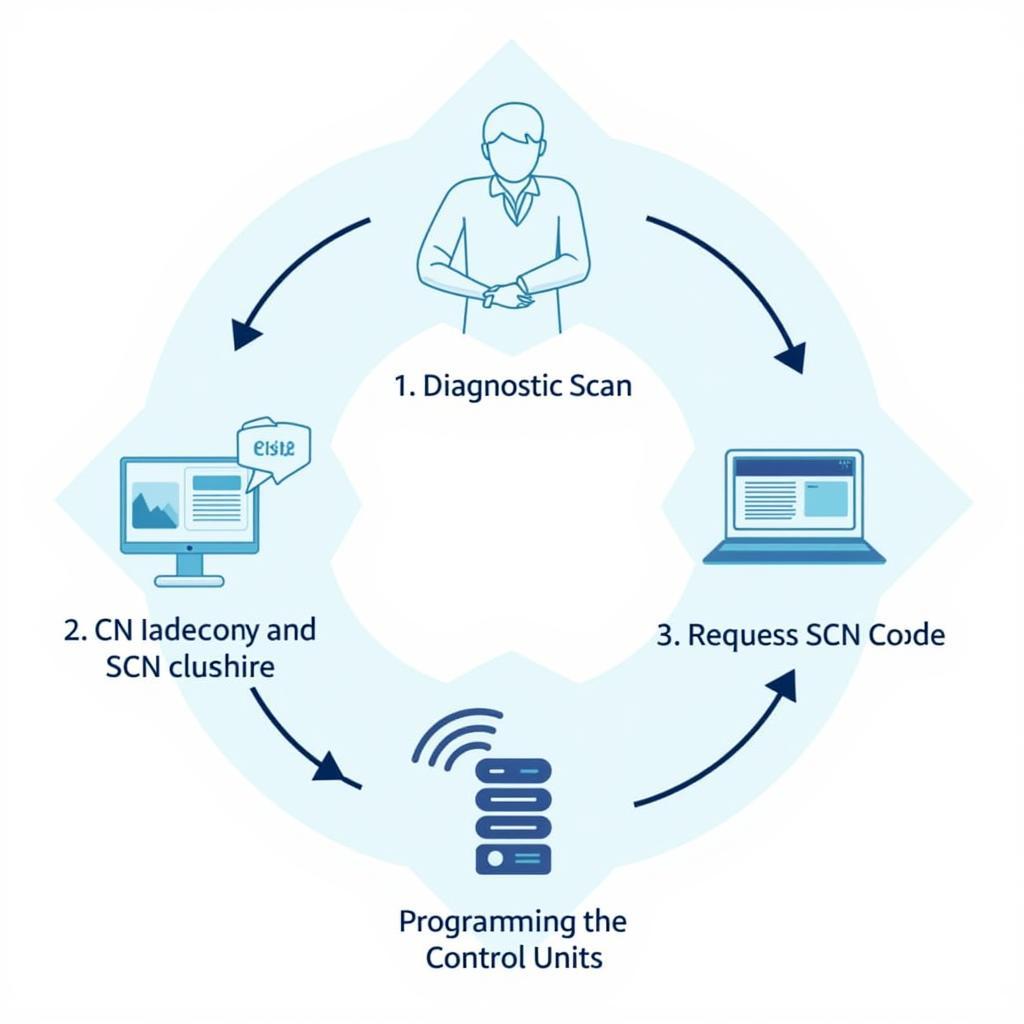Knowing the location of your Mercedes Vito’s diagnostic plug is crucial for troubleshooting and maintaining your vehicle. This guide provides a detailed overview of the OBD-II port location in various Mercedes Vito models, along with common issues and diagnostic procedures. We’ll explore everything from understanding the diagnostic plug’s function to advanced troubleshooting techniques.
What is the OBD-II Port and Why is it Important?
The OBD-II (On-Board Diagnostics, Second Generation) port is a standardized 16-pin connector found in most vehicles manufactured after 1996, including the Mercedes Vito. It’s the gateway to your vehicle’s electronic control units (ECUs), allowing access to a wealth of data about its performance and health. This data is essential for diagnosing issues, monitoring emissions, and performing maintenance tasks. Think of it as your Vito’s central communication hub for diagnostics.
Where to Find the Mercedes Vito Diagnostic Plug Location
Generally, the OBD-II port in a Mercedes Vito is located under the dashboard, on the driver’s side. However, the exact mercedes vito diagnostic plug location can vary slightly depending on the model year and configuration.
Mercedes Vito W638 (1996-2003) Diagnostic Plug Location
In the W638 generation, the diagnostic plug is typically found beneath the steering wheel, near the fuse box. It’s often tucked away behind a plastic cover, which you can easily remove to access the port.
Mercedes Vito W639 (2003-2014) Diagnostic Plug Location
For the W639 models, the OBD-II port is usually located slightly higher up, near the steering column, often just below the ignition switch. Again, it might be concealed behind a small panel.
Mercedes Vito W463 (2014-Present) Diagnostic Plug Location
In the newer W463 Vito models, the mercedes vito diagnostic plug location remains consistent with the previous generation, usually situated near the steering column on the driver’s side.
Common Issues Related to the Mercedes Vito Diagnostic Plug
Sometimes, accessing or using the diagnostic plug can present challenges. Here are a few common scenarios:
- Damaged or Obstructed Port: Physical damage or debris blocking the port can prevent proper connection with diagnostic tools.
- Loose Connection: A loose connection can interrupt communication and lead to inaccurate readings.
- Faulty Wiring: Damaged wiring in the OBD-II system can cause communication errors.
- Blown Fuses: Check the relevant fuses if the OBD-II port is not functioning.
Troubleshooting Mercedes Vito Diagnostic Plug Problems
If you encounter any of these problems, here’s what you can do:
- Visual Inspection: Carefully examine the port for any signs of damage, debris, or loose connections.
- Check Fuses: Consult your Vito’s owner’s manual to identify and check the fuses related to the OBD-II system.
- Wiring Inspection: If you suspect wiring issues, consult a qualified technician.
 Inspecting the Mercedes Vito OBD2 Connector for Damage
Inspecting the Mercedes Vito OBD2 Connector for Damage
Using the Mercedes Vito Diagnostic Plug for Remote Diagnostics and Programming
Remote diagnostics and programming are becoming increasingly popular for the Mercedes Vito. This technology allows technicians to access your vehicle’s data remotely, diagnose problems, and even perform software updates without physical access to the vehicle. This can save time and money, especially for routine maintenance and software updates.
“Remote diagnostics provides significant advantages, particularly for fleet management and preventative maintenance,” says automotive expert, Dr. Andreas Mueller, specializing in vehicle electronics and diagnostics. “By identifying potential issues early, we can often prevent more serious and costly problems down the line.”
Conclusion
Knowing the mercedes vito diagnostic plug location is essential for proper vehicle maintenance and troubleshooting. This guide provides a comprehensive overview of the OBD-II port’s location in various Vito models, common issues, and troubleshooting tips. By understanding how to use this vital tool, you can ensure the optimal performance and longevity of your Mercedes Vito.
FAQ
- What does the OBD-II port do? It allows access to your vehicle’s electronic control units for diagnostics and maintenance.
- Where is the OBD-II port in a Mercedes Vito? Generally, under the dashboard on the driver’s side.
- What if my diagnostic plug is damaged? Consult a qualified technician for repair or replacement.
- Can I use the OBD-II port for remote diagnostics? Yes, remote diagnostics and programming are possible.
- Why is my OBD-II port not working? Check for blown fuses, loose connections, or damaged wiring.
- What are the benefits of remote diagnostics? It saves time and money, especially for routine maintenance.
- How can I locate the exact OBD port in my Vito model? Refer to your owner’s manual or contact a Mercedes-Benz specialist.
“Regularly checking your vehicle’s diagnostic data, even if there are no apparent problems, can help identify potential issues before they escalate,” adds Dr. Mueller. “This proactive approach to maintenance can save you significant time and expense in the long run.”
For further information or assistance, please explore our other articles on CARDIAGTECH regarding Mercedes-Benz diagnostics, or contact us directly. You can reach our 24/7 support team via Whatsapp: +1 (641) 206-8880, Email: CARDIAGTECH[email protected] or visit us at 276 Reock St, City of Orange, NJ 07050, United States.


